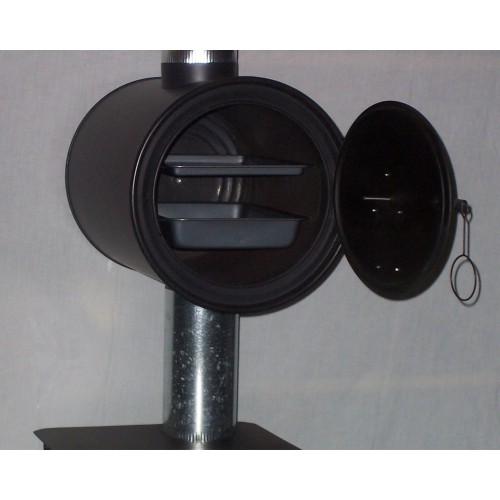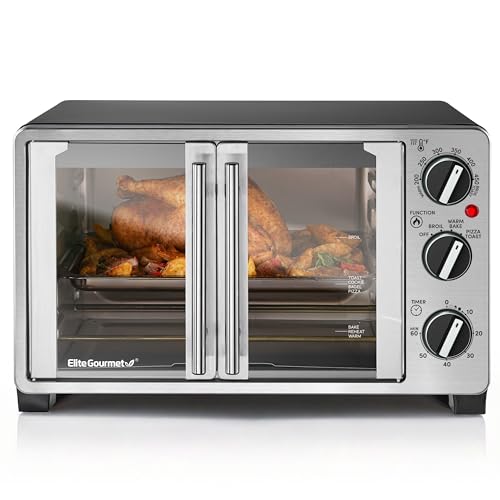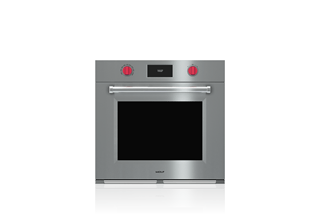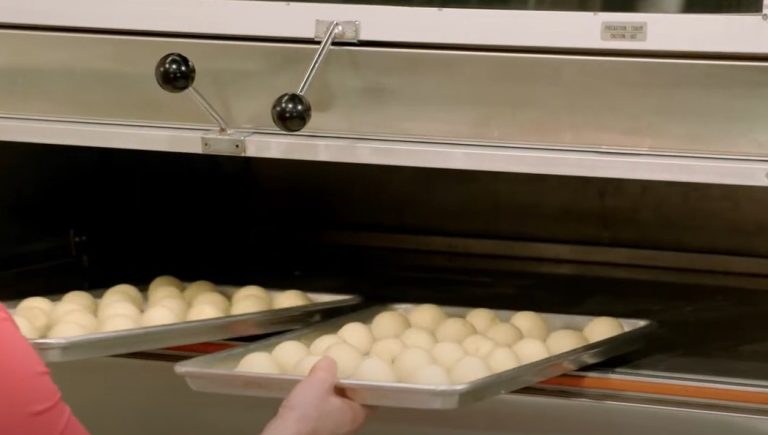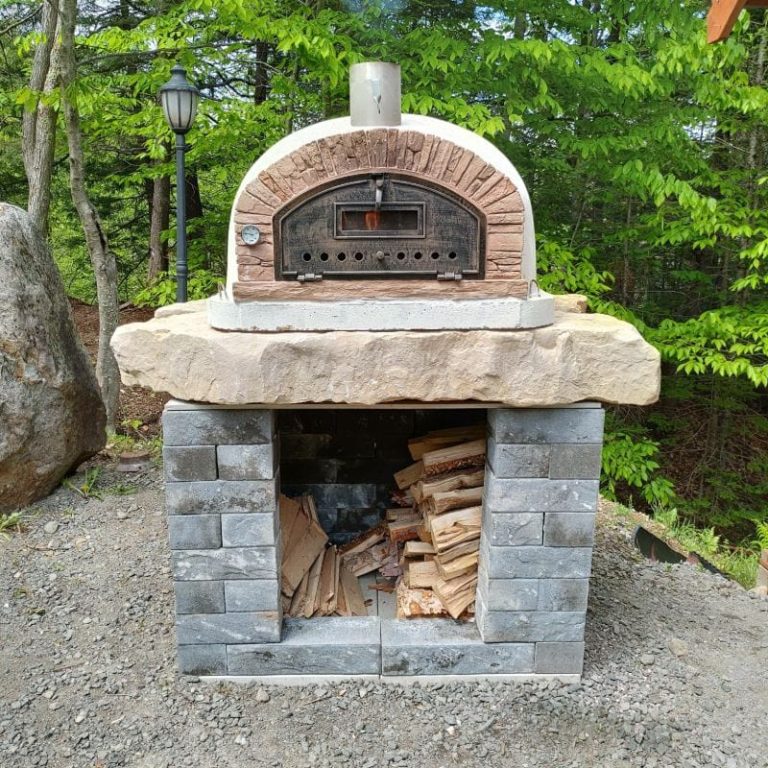Wood Stove Chimney Oven: Ultimate Heating Guide
Imagine curling up next to a crackling fire, warmth enveloping your home, while the delightful aroma of a homemade meal fills the air. The secret?
A wood stove chimney oven. This ingenious appliance not only keeps your home cozy but also transforms your cooking experience into something truly special. Whether you’re a seasoned chef or a home-cooking enthusiast, a wood stove chimney oven could be the missing piece in your quest for the perfect kitchen.
As you read on, you’ll discover how this versatile tool can enhance your daily life, save you money, and make your home more sustainable. Curious to learn how it can revolutionize your living space? Keep reading to uncover the surprising benefits and unique features of the wood stove chimney oven.

Credit: kegland.com.au
Wood Stove Chimney Oven
Benefits Of Wood Stove Chimney Ovens
Wood stove chimney ovens offer numerous advantages for homeowners. They provide warmth, save money, and enhance cooking experiences. Many people appreciate their rustic charm and efficiency.
1. Cost-Effective Heating
Wood stove chimney ovens reduce heating costs significantly. They use affordable fuel, like wood. This makes them a budget-friendly option for many homes.
2. Eco-Friendly Option
These ovens are environmentally friendly. Wood is a renewable resource. Burning wood reduces reliance on fossil fuels. It also decreases carbon footprint.
3. Enhanced Cooking Experience
Cooking with a wood stove chimney oven is unique. It adds a special flavor to dishes. Many chefs prefer the rich taste it provides.
4. Reliable Heat Source
Wood stoves offer consistent heat. They work even during power outages. This reliability is valuable, especially in winter.
5. Ambiance and Aesthetic Appeal
The crackling sound of burning wood creates a cozy atmosphere. The charm of a wood stove enhances home decor. It adds warmth and comfort to any room.
Choosing The Right Wood Stove
Choosing the right wood stove is crucial for your home’s warmth. A perfect stove complements your home’s style and heating needs. It ensures efficient burning and saves on heating costs. With numerous options, finding the ideal stove can be overwhelming. This guide helps you navigate features and benefits.
Size Matters
Consider the size of the space to heat. Larger rooms need bigger stoves. Small spaces require compact models. Measure your room to determine the right stove size. Avoid oversized stoves that waste energy.
Material Quality
Stoves come in different materials. Cast iron offers durability and retains heat longer. Steel stoves heat up quickly but cool down fast. Choose a material that fits your heating preference. Quality materials ensure longevity and efficiency.
Efficiency Ratings
Check the stove’s efficiency rating. High ratings mean better fuel use and lower emissions. Efficient stoves reduce costs and environmental impact. Look for stoves with certification for better performance.
Design And Aesthetics
Stove design affects home aesthetics. Traditional designs suit classic interiors. Modern styles fit contemporary spaces. Pick a design that complements your decor. Aesthetic appeal enhances your home’s ambiance.
Budget Considerations
Set a budget before shopping. Prices vary based on features and materials. More expensive models offer advanced features. Consider long-term savings on fuel costs. Balance between initial costs and future savings.
Installation Tips And Safety Measures
Ensure proper ventilation by positioning your wood stove chimney oven in a spacious area. Follow manufacturer guidelines for chimney placement to prevent fire hazards. Use heat-resistant materials for installation and conduct regular inspections to maintain safety.
Installing a wood stove chimney oven can transform your home into a cozy retreat, offering warmth and a unique cooking experience. However, ensuring its safe and efficient installation is crucial. Whether you’re a DIY enthusiast or hiring a professional, understanding the installation process and adhering to safety measures can make all the difference.
Proper Placement Of The Wood Stove
Choosing the right spot for your wood stove is vital. It should be placed away from flammable materials like curtains and furniture. Ensure there’s enough space around the stove for heat to circulate freely. A friend once installed their stove too close to a wall, resulting in scorch marks. It’s a lesson in the importance of clearances. Check the manufacturer’s guidelines for recommended distances.
Chimney Installation Essentials
The chimney is the heart of your wood stove system. It needs to be installed vertically for optimal draft. A straight chimney is more efficient and reduces creosote build-up. Use high-quality, insulated chimney pipes to maintain heat. Remember, a well-installed chimney can prevent smoke from backing into your home, keeping your air clean and breathable.
Sealing And Insulation
Proper sealing prevents heat loss and enhances efficiency. Use a high-temperature sealant around the stove pipe joints. It ensures that smoke and gases exit through the chimney, not into your living space. Insulating around the chimney is equally important. It keeps the heat where it should be and prevents cold air from entering your home. Have you considered the impact of insulation on your heating bill?
Regular Maintenance And Cleaning
A clean chimney is a safe chimney. Regular cleaning reduces the risk of chimney fires caused by creosote build-up. Schedule annual inspections, especially before the heating season kicks in. Invest in a chimney brush or hire a professional cleaner. Consistent maintenance ensures your wood stove operates efficiently and safely.
Safety Measures To Consider
Always have a smoke detector and carbon monoxide detector in the room with the wood stove. They are your first line of defense against potential hazards. Test them regularly to ensure they’re functioning properly. Have a fire extinguisher nearby, just in case. It’s better to be prepared for an emergency than caught off guard. Are you ready to handle an unexpected fire incident? By following these tips, you not only protect your home but also maximize the benefits of your wood stove chimney oven. What are your thoughts on these safety measures?

Credit: www.ebay.com
Efficient Heating Techniques
Efficient heating techniques are crucial for maximizing the benefits of a wood stove chimney oven. Understanding how to use this appliance effectively can save energy and enhance comfort. Let’s delve into some methods to optimize the heating process and create a cozy environment.
Strategic Wood Placement
Placing wood strategically enhances heat distribution. Arrange logs in a crisscross pattern. This allows air to circulate freely. It helps the fire burn evenly. Avoid stacking wood too tightly. This might restrict airflow. Ensure there’s space between logs for better combustion.
Proper Airflow Management
Managing airflow is key to efficient heating. Adjust the damper to control the air intake. More air creates a hotter fire. Less air maintains a gentle warmth. Keep the chimney clean. A clean chimney improves airflow significantly. Regular maintenance prevents blockages.
Regular Cleaning And Maintenance
Regular cleaning ensures optimal performance. Remove ash buildup frequently. Ash can hinder the combustion process. Check the chimney for creosote deposits. Creosote reduces efficiency and poses safety risks. Inspect the stove’s components. Replace worn parts promptly.
Utilizing Heat Retention Techniques
Heat retention is essential for long-lasting warmth. Insulate the area around the stove. Insulation helps keep the heat contained. Use fire bricks inside the stove. Fire bricks retain heat and distribute it evenly. Consider using a stove fan. It circulates warm air throughout the room.
Timing And Duration Of Use
Timing affects heating efficiency. Use the stove during the coldest hours. This maximizes its impact. Limit usage when temperatures rise. Extend the duration of use in colder months. Longer usage ensures continuous warmth. Adjust the heating schedule as needed.
Maintenance And Cleaning Practices
Regular maintenance and cleaning of your wood stove chimney oven are crucial. They ensure safety and efficiency. A well-maintained chimney oven reduces fire risks. It also optimizes heat output. Following simple practices can extend its lifespan.
Inspecting For Creosote Buildup
Creosote is a black, tar-like substance. It forms inside chimneys from wood smoke. Too much creosote can cause chimney fires. Inspect your chimney monthly for creosote buildup. Use a flashlight to check the flue. A thin layer is normal. Thick layers need cleaning.
Cleaning The Chimney
Cleaning the chimney removes creosote and soot. Do this at least once a year. Use a chimney brush that fits your flue. Move the brush up and down to scrub. Use a vacuum to collect debris at the bottom. Wear goggles and a mask for protection.
Checking The Chimney Cap
The chimney cap keeps out debris and animals. Check it for damage or blockages. Make sure it is securely attached. Remove any leaves or twigs. Replace the cap if it’s damaged. A well-maintained cap prevents blockages.
Inspecting The Stove And Gaskets
Check your stove for cracks or rust. Inspect the gaskets around the door. Worn gaskets reduce efficiency. Replace gaskets if needed. This ensures a tight seal. It helps maintain proper airflow.
Regularly Emptying The Ash Pan
Empty the ash pan after every few fires. Ashes can block airflow. Use a metal container to store ashes. Avoid plastic as ashes can stay hot. Use ashes in your garden as fertilizer. They enrich the soil with nutrients.
Scheduling Professional Inspections
Hire a professional for annual inspections. They check for hidden issues. Professionals use special tools for thorough cleaning. They ensure your chimney meets safety standards. This gives you peace of mind.

Credit: www.timelessclassicwoodstoves.com
Frequently Asked Questions
How Does A Wood Stove Chimney Oven Work?
A wood stove chimney oven uses heat from burning wood. The chimney releases smoke outside. It cooks food slowly.
What Are The Benefits Of Using A Chimney Oven?
It provides even cooking. Saves energy. Adds a rustic flavor to food. Perfect for slow-cooked dishes.
How Do I Maintain A Wood Stove Chimney Oven?
Regular cleaning is key. Remove ash often. Check chimney for blockages. Ensure proper ventilation for safety.
Conclusion
A wood stove chimney oven offers warmth and cooking in one. It brings rustic charm to any home. Enjoy cozy evenings with family around the fire. Cook delicious meals using natural heat. Save on energy bills while reducing carbon footprint.
These ovens are durable and efficient. Perfect for those who love traditional living. Consider adding one to your home for a unique touch. Experience the comfort and functionality it provides. Embrace a sustainable lifestyle with this practical choice. It fits well in any space, big or small.
Related Article
- Where to Find Whirlpool Oven Model Number? Expert Tips
- Why is My Oven Not Turning On? Quick Fixes Explained
- Wood for Wood Burning Pizza Oven: Best Choices Revealed
- Wooden Skewers in Oven: Perfect Grilling Techniques

Hi there, my name is Kitty Wilson and I am the founder of Globokitchen.com. Professionally, I am a chef and start my cooking journey since 2009. Stay tuned to get splendid cooking tips, ideas, and hacks

